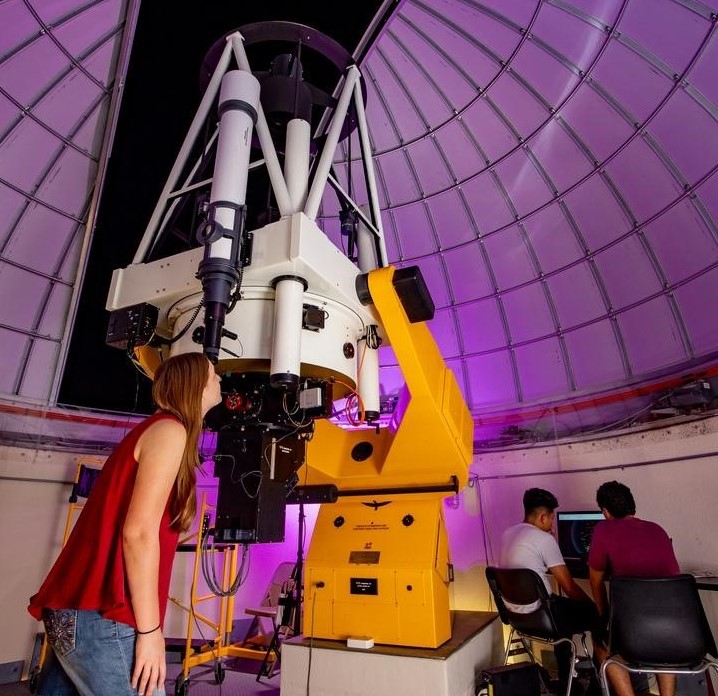Document Type
Conference Proceeding
Publication Title
SPIE Smart Structures and Materials + Nondestructive Evaluation and Health Monitoring
Abstract
In anticipation of deep space travel, new materials are being explored to assist and relieve humans in dangerous environments, such as high radiation, extreme temperature, and extreme pressure. Ras Labs Synthetic Muscle™-electroactive polymers (EAPs) that contract and expand at low voltages-which mimic the unique gentle-yet-strong nature of human tissue, is a potential asset to manned space travel through protective gear and human assist robotics and for unmanned space exploration through deep space. Gen 3 Synthetic Muscle™ was proven to be resistant to extreme temperatures, and there were indications that these materials would also be radiation resistant. The purpose of the Ras Labs-CASIS-ISS Experiment was to test the radiation resistivity of the third and fourth generation of these EAPs, as well as to make them even more radiation resistant. On Earth, exposure of the Generation 3 and Generation 4 EAPs to a Cs-137 radiation source for 47.8 hours with a total dose of 305.931 kRad of gamma radiation was performed at the US Department of Energy's Princeton Plasma Physics Laboratory (PPPL) at Princeton University, followed by pH, peroxide, Shore Hardness durometer, and electroactivity testing to determine the inherent radiation resistivity of these contractile EAPs, and to determine whether the EAPs could be made even more radiation resistant through the application of appropriate additives and coatings. The on Earth preliminary tests determined that selected Ras Labs EAPs were not only inherently radiation resistant, but with the appropriate coatings and additives, could be made even more radiation resistant. G-force testing to over 10 G's was performed at US Army's ARDEC Labs, with excellent results, in preparation for space flight to the International Space Station National Laboratory (ISS-NL). Selected samples of Generation 3 and Generation 4 Synthetic Muscle™, with various additives and coatings, were launched to the ISS-NL on April 14, 2015 on the SpaceX CRS-6 payload, and after 1+ year space exposure, returned to Earth on May 11, 2016 on SpaceX CRS-8. The results were very good, with the survival of all flown samples, which compared very well with the ground control samples. The most significant change observed was color change (yellowing) in some of the flown EAP samples, which in polymers can be indicative of accelerated aging. While the Synthetic Muscle Experiment was in orbit on the ISS-NL, photo events occur every 4 to 6 weeks to observe any changes, such as color, in the samples. Both the 32 flown EAP samples and 32 ground control samples were tested for pH, material integrity, durometer, and electroactivity, with very good results. The samples were also analyzed using stereo microscopy, scanning electron microscopy (SEM)), and energy dispersive X-ray spectroscopy (EDS). Smart electroactive polymer based materials and actuators promise to transform prostheses and robots, allowing for the treatment, reduction, and prevention of debilitating injury and fatalities, and to further our exploration by land, sea, air, and space.
DOI
doi: 10.1117/12.2267716
Publication Date
4-2017
Recommended Citation
Rasmussen, Leonore; Albers, Leila N.; Rodriguez, Simone; Gentile, Charles; Meixler, Lewis D.; Ascione, George; Hitchner, Robert; Taylor, James; Hoffman, Dan; Cylinder, David; Gaza, Ramona; Moy, Leon; Mark, Patrick S.; Prillaman, Daniel L.; Nodarse, Robert; Menegus, Michael J.; Ratto, Jo Ann; Thellen, Christopher T.; Froio, Danielle; Valenza, Logan; Poirier, Catherine; Sinkler, Charles; Corl, Dylan; Hablani, Surbhi; Fuerst, Tyler; Gallucci, Sergio; Blocher, Whitney; and Liffland, Stephanie, "Ras Labs-CASIS-ISS NL Experiment For Synthetic Muscle Returned To Earth: Resistance To Ionizing Radiation" (2017). Aerospace, Physics, and Space Science Student Publications. 30.
https://repository.fit.edu/apss_student/30


